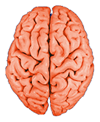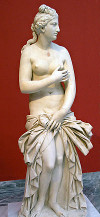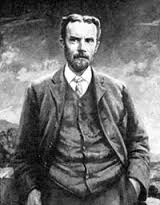 This post is working towards a paper I will call Logic Driven Physics. At the moment, I believe that I am the only person in the world writing this story of how the science of the Stoics can be reverse engineered to provide a new, alternative take on physics, logic, and mathematics.
This post is working towards a paper I will call Logic Driven Physics. At the moment, I believe that I am the only person in the world writing this story of how the science of the Stoics can be reverse engineered to provide a new, alternative take on physics, logic, and mathematics.
In this post, I consider physical reality as a system. I take a leaf out of system science where there is not one paradigm for understanding a system but two. I argue that the foundations of science, including physics and mathematics, must be bilateral. System science demands two takes on reality. One take is diachronic in nature, the other synchronic. In system science, the diachronic side employs ordinary calculus and studies time series whilst the synchronic side employs the operational calculus pioneered by Heaviside and sees its reality as having a “holographic” flavour nowadays in Laplace and Fourier transforms.

There is no construct in science more fundamental than gender. The ancients knew this but the moderns have long since forgotten it.
This post will explore the epistemological and ontological potential of gender in providing a unifying foundation for science and mathematics. In this respect, the structure of the French language provides a first glimpse of the relationship between knowledge and gender. French tends to explain concepts in terms of oppositions, often expressed across opposing genders. For example, French for knowledge is the feminine term la connaissance. The natural corresponding opposition in French is the masculine le savoir. Someone with a lot of specialised connaissance or knowledge is a connasseur. The most extreme kind of connaisseur.is the legendary idiot savant, the one who can digest the contents of the Yellow Pages in one sitting. On the opposite side of the fence is the savant of the non-idiot kind. The most gifted savant of all time was the equally legendary Socrates who had no reliable knowledge whatsoever as expressed in his Confession of Ignorance. However, he knew that fact with absolute certainty, a mark of the true savant. It is quite ironic that the Socratic Confession of Ignorance provides the key principle in developing algebra capable of integrating pure ignorance with pure certitude in a tractable manner, as we shall see. Keep on reading!
Traditional sciences and mathematics is very “left brained” – abstract, dualist, empirical, atomist, and rely on a rhetorical form of reasoning. In antiquity, the Epicureans priveledged that form of thought. The Stoics favoured a non-dualist, non-atomist, dialectical form of reasoning. When it comes to Aristotle, such a dichotomy is not at all clear cut. As well as being the greatest philosopher of all time, Aristotle was also the greatest fence sitter of all time. With him, our neat dichotomy between left side and right side thinking meets a blank. This man had a foot firmly placed on both sides. Nowhere is this more apparent than with his categorical logic and in particular his square of oppositions. In this section, without going into too much detail, we summarise the aspects that immediately concern our project. [continue reading…]
There are two different takes on explaining the origins of the universe., one modern and the other very ancient. The two explanations can be summed up as the Big Bang and the Big Birth theories. Read more …
This is a post from the Stoic mailing list at Yahoo Groups. It touches on a central tenet of Stoicism.
Jan wrote:
It’s certainly traditional Stoic doctrine that somehow connected with the all-pervading Logos (=Zeus=Nature=Providence=designing fire) is the obligatory law of nature, aka jus nature; the mind of the (human) sage is, according to classical Stoicism, aligned with this law of nature. That’s a bit too mystical for me (although it was convenient enough for the ancient Stoics.)
. [continue reading…]
 This post is working towards a paper I will call Logic Driven Physics. At the moment, I believe that I am the only person in the world writing this story of how the science of the Stoics can be reverse engineered to provide a new, alternative take on physics, logic, and mathematics.
This post is working towards a paper I will call Logic Driven Physics. At the moment, I believe that I am the only person in the world writing this story of how the science of the Stoics can be reverse engineered to provide a new, alternative take on physics, logic, and mathematics.
